|
|
|
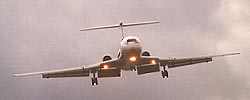 |
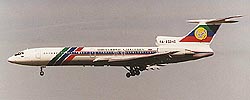 | |
|
PHOTO GALLERIES |
THE PRINCIPLES OF PLANESPOTTING I'd like to share with you my personal point of view on
plane spotting. It doesn't have much in common with the world-wide
spreaded understanding of this activity. Still, I hope, it might be
interesting to you. So, lets begin from the beginning. Since you decided
to became a plane spotter, you should choose the way to do it you like
best of all. The first option is to go to the airport and just watch arriving and departing planes, looking at their c/s and identifying the type and operator of a particular plane. This kind of plane spotting requires nothing but your own eyes and, probably, binoculars that are useful for observing distant aircraft, and brings nothing but some kind of rest. The more advanced plane spotters prefer to write down the results of their observations. One way to do it is to use a notebook and write down the registration numbers, operators, times of arrivals/departures etc. of the airplanes being observed. Still, this type of planespotting is not very popular. No doubt, the most widely spreaded type of plane spotter is the one with the camera in his hands. This gives you all that first two types can give (without any boring writing in the notepad :)) plus photos that can be stored and viewed long after the trip to an airport. Note that this type of plane spotting is technically most difficult as well because you need not only to watch airplanes but be able to make a good picture. In other words, you should be a photographer as well. So what does the real plane spotter look like? I
believe that equipment of a plane spotter should include nothing but a
camera/notepad, backpack with some useful things and, probably, a bicycle.
Anything that doesn't fit into this list should be left at home as
unnecessary.
First of all, a camera of a plane spotter (if he has one) should be completely manual or be used in the mode that allows manual operation. Any photo is, to some extent, a work of art, and it means that since it appears, it should be done solely by its creator. I do not understand those guys who just push a single button of their ultra-modern "Minolta", "Olympus" etc. and then proudly say "I took that picture!". How can one get a satisfaction from that kind of photography if electronics does everything for you??? Of course, it is not a piece of cake to use a manual camera and to take a picture which quality would be compared to the one shot with a modern automatic system. It requires the knowledge of the basic principles of photography, ability to adjust focus, exposure and shutter speed according to the situation, ability to chose the right position relatively to the sun etc. But when you finally see your picture, developed and printed, you know (even if the quality is not very good) that you have done this picture yourself. Isn't it worthy? A car, as well as an automatic camera, is lethal for the spirit of real plane spotting. By the present time I gained some experience of plane spotting in the Miami International and Ft.Lauderdale/Hollywood international airports. I have no intention to offend anyone, but when I see the lazy American spotters sitting in their conditioned cars, with ladders installed nearby (which will be discussed next), and waiting for a plane to arrive, I ask myself a question: "Is this the way plane spotting should be done?". Is there a common sense in simplifying your hobby as much as possible? When fishing, why don't you just use a couple packs of TNT to get as much fish as you want? The answer is obvious: this is not what you want from fishing! As well as the real dedicated fisherman never cares much about the final result but gets a pleasure from the process of fishing, the real plane spotter should not be interested in the nice pictures only; he should love the process of plane spotting. A ladder is another example of a lazy "spotter" equipment. Why don't
you try to use smartly a local landscape or climb a tree to get an
unspoiled view of the runways and taxiways? Sure, it'll take from you much
time and effort than just to arrive with a ladder to any place by the
fence. But there are places that can never be reached with a ladder! Just
look at all these guys in the photo below (taken by Daniel Werner from
Germany): they all go the easy way, but what are they going to end up
with?  I believe, their result will be a couple dozens almost identical pictures. So is it worthy to copy what others do??? Take a look at the photo of MD-82 in the upper part of this page. It was taken at SVO from the tree, from between sites 8 and 9 (if you go here you can see them indicated on the aerial photo of SVO), because the airport is surrounded with 2-meter-high concrete fence which allows no view of the airfield at all. Hardly you will manage to find a photo like this, because the vast majority of the spotters would never go to this site. But the question is: "Do you want to take your own unique photo or just to be a kind of a copy machine? Don't believe those who does plane spotting in the American way. Until
you spend the whole day at the airport on your feet, you won't feel the
spirit of plane spotting. One needs to walk 10, 15, 20 km in the melting
sun or on the cold misty day to explore the best spotting sites, to go
through the forest and climb on the trees to see the taxiways, and to
watch out to avoid the police patrol. Only then one can call himself a
plane spotter. Almost all plane spotters I ever met were eager about
collecting photos of as much different color schemes as possible. Many of
them attentively recorded registration numbers of every plane they ever
saw and shot. My point of interest in plane spotting is to see and to photograph as many aircraft TYPES as possible. Painting scheme is just an identification mark allowing one to determine what company currently owns a particular airplane. It can not even tell you what company is operating that plane at the moment you see it, so hardly one should consider a painting scheme as the primary object of interest (I don't mean some very special examples of really artistic and colorful painting schemes; they are quite rare and, of course, are interesting to everyone, not only to spotters). Nevertheless, a lot of spotters just rush to take a picture of a plane even if the painting scheme is even slightly different from the one they've already seen. The typical examples are the paint schemes of many post-Soviet airlines. Most of them inherited the straigt blue line along fusalage as the basic element, with addition of the company logo or name in the place of Aeroflot's logo. Nevertheless, amazingly many spotters are hunting for the mentioned above. It seems to me to be at least boring. 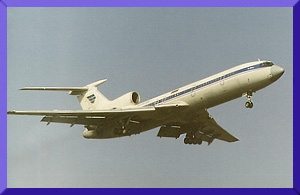 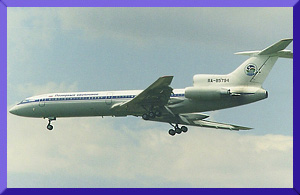 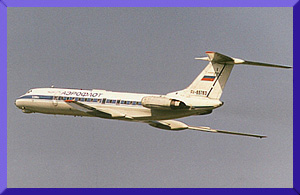 The guys who record the registration numbers instead of
hunting for painting schemes seem to do quite boring thing, but at least
this is a useful kind of spotting. Following references to databases of
registration numbers, one can track the "way" of a particular plane from
the day it was rolled out of the assembly facility up to the day it was
retired from service, was placed on a display at some museum or crashed.
That's why there is a section "Registration numbers" on this site. I never
record registration numbers while watching planes and taking pictures but
if I can distinguish a number when a film is developed and printed, I put
that number into "Registration numbers" - my small contribution into the
world plane spotting :). As I have mentioned already, my primary interest lies in the type and the model of an airplane. Why so? I believe that people who design, built and service an aircraft deserve much more attention and respect than those who just buy it "ready for use", and make money out of it. Some spotters say that they could agree with me but "...there are not so many different models of airplanes in service, what should one do if he alredy fotografed them all?". Still, I never met or heared about a spotter who had photographed all existing models of airplanes. So there is a lot of plane spotting to do yet, guys :)!
|
HOW TO DO PLANESPOTTING AT:
Sheremet'yevo
P/S CORCKBOARD
|